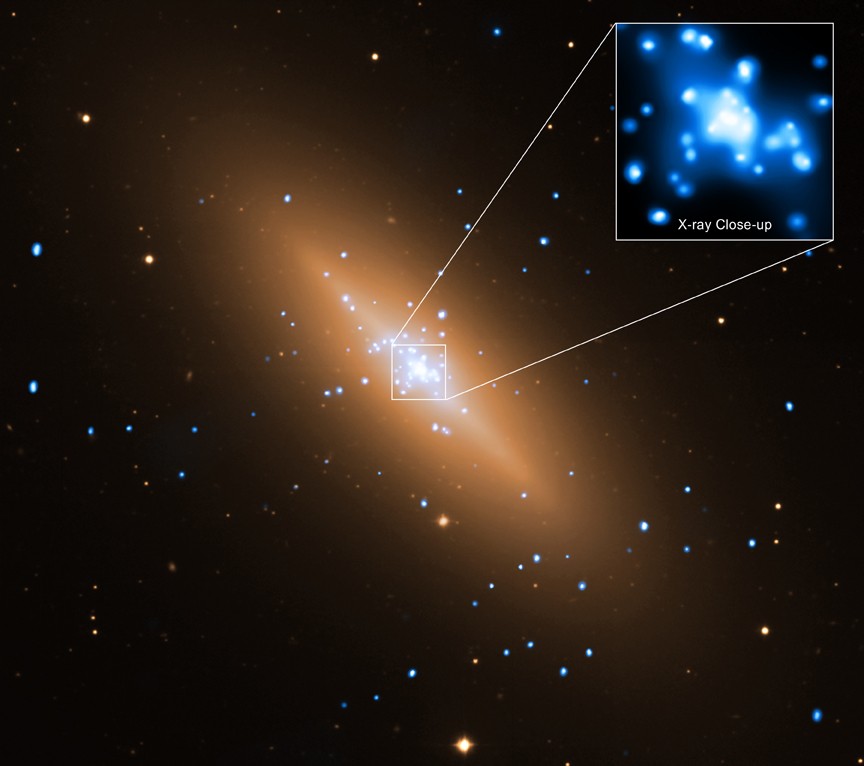Added 1 new A* page:Black hole news! Data from the Chandra X-ray telescope has been used to come up with the first evidence for hot gas falling into a black hole. The galaxy in which this was observed was NGC 3115, a relatively nearby galaxy at 32 million light years from Earth. This composite image of the galaxy shows blue Chandra X-ray data over a visible light image obtained by the ESO's Very Large Telescope:

image by NASA/ESO (source)
The X-ray emissions come from binary stars, and hot interstellar gas; researchers observed that the temperature of the interstellar gas, which they can calculate based on the amount of X-ray energy it emits, begins a marked increase within about 700 light years of the galaxy's center; they think this heating can only be due to the gas being compressed as it is pulled inward by the supermassive black hole at the center. That 700 light year distance is thus NGC 3115's Bondi radius, named after the "Anglo-Austrian mathematician and cosmologist" Hermann Bondi.
A Bondi radius of that size confirms that NGC 3115's central supermassive black hole must contain about 2 billion solar masses, which I think was the approximate value first assigned to it when the hole was discovered back in 1992. That makes it the nearest billion-solar-mass-class black hole to Earth; the supermassive black hole A*, at the center of our own galaxy, boasts only about 4 million solar masses--1/500th the size of NGC 3115's! (Remember though that we already know of larger ones: M87's has been measured at about 6.6 billion solar masses, and the one at the center of OJ 287 *might* be about 18 billion solar masses.)
From the sound of his Wikipedia article, Bondi was a pretty interesting fellow. An Austrian, his prowess in mathematics took him to Cambridge in 1937, at the tender age of 18, allowing him to escape the persecution of Jews in his native country--but then, once World War II broke out, he was interned on the Isle of Man and in Canada--due to his Austrian nationality, I guess. But he went on to become a lecturer in mathematics at Cambridge, and a British subject.
And for a time, Bondi contended with the Big Bang: before the discovery of cosmic background radiation in 1964 thrust the Big Bang theory, which predicted such radiation, to the forefront, the Steady State theory developed in 1948 by Bondi, Fred Hoyle, and Thomas Gold held some sway as the scientific explanation of the universe. Einstein's general relativity had shown in 1916 that a static universe was impossible, and Edwin Hubble had shown in 1929 that the universe was expanding; the Steady State theory tried to reconcile these observations with a belief in an eternal, essentially unchanging universe--a belief Einstein had shared before Hubble's breakthrough--by positing that matter is continually created as the universe expands, keeping the average density of matter in the universe steady over time. This sounds goofy to us now, but it was tantalizingly difficult to disprove for a while, since, as Wikipedia says, "the amount required is low and not directly detectable: roughly one solar mass of baryons per cubic megaparsec per year or roughly one hydrogen atom per cubic meter per billion years, with roughly five times as much dark matter." Needless to say, the Steady State theory has long been discredited; fortunately for black hole fans, Bondi would go on to much more scientifically grounded theories. :)
|
